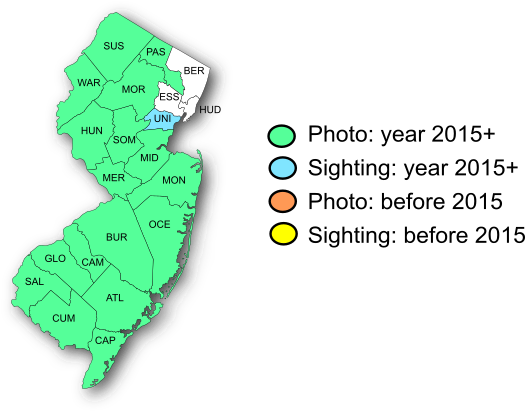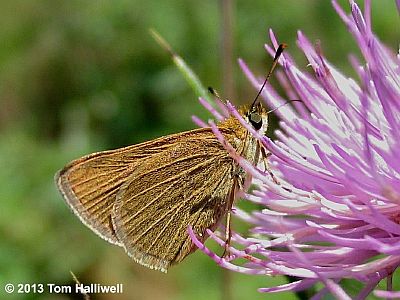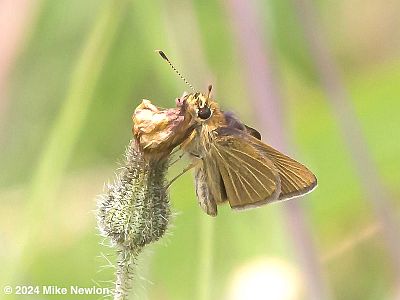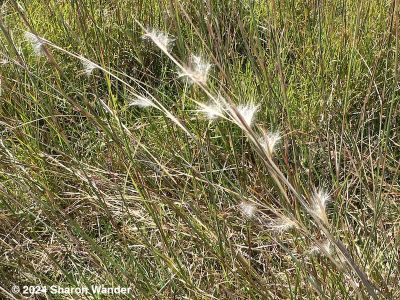New Jersey Butterfly Club
A chapter of the North American Butterfly Association (NABA)
Swarthy Skipper
Nastra lherminier
Identification: Tiny—FW 0.5". Sexes similar on both surfaces. Above: FW and HW usually unmarked blackish-brown, rarely with 2 faint spots in the mid-FW. Below: FW and HW unmarked dull yellowish-brown, with paler veins that become less obvious as the butterfly becomes old and worn. Similar skippers: Tawny-edged lacks the pale veins. European: When worn can easily be misidentified as a Swarthy, but "Euros" are orange above and usually finish flying by the middle of July.
NJ Status and Distribution: Resident. Uncommon and local in northern counties, where it is usually found in very small numbers. More common and widespread from Middlesex and Mercer counties south, where it may be locally abundant.

Habitat: Dry, grassy fields.
Flight Period: Two broods from late May—early July and early August—mid-September in the north; mid-June—early July and early August—late-September in the south. Extreme dates: North Jersey 5/22—10/5; South Jersey 5/23—10/30.
Caterpillar Food Plants: Little Bluestem grass (Schizachyrium scoparium), possibly other grasses.
Overwintering Stage: Mature caterpillar.
Good Locations: Big Brook Park, Negri-Nepote Native Grassland Preserve, Assunpink WMA, Willowwood Arboretum, Greenwood Forest WMA, Higbee Beach WMA.
Comments: When a grass-skipper lacks any prominent identifying field marks, think Swarthy, but until the end of July beware of worn Europeans.



